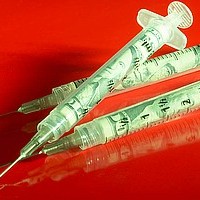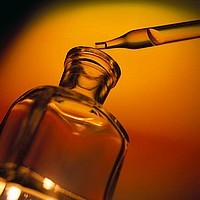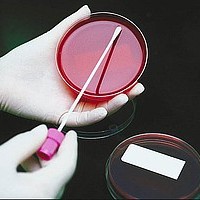 |
Below is a partial list of ingredients in vaccines. NOTE: THERE IS NO SAFE LEVEL FOR SOME OF THESE POISONS. The damage from these toxins, including brain damage, can vary from mild enough not to be apparent, to severe, and in some cases death. You cannot inject a human or animal with these poisons and expect no adverse effect. What varies is the degree of damage. This is due to:
genetic variations in recipients, affecting susceptibility.
-
variations within recipients due to stress, an over-worked immune system, previous vaccines,etc.
-
variations between vaccine batches - difficult in controlling the levels of toxins in vaccines, results in some batches labelled "hot lots". Many of these "hot lots" are not recalled in time
-
These poisons interfere with the activities of the immune system, thus weakening it. In the young, the immune system is not fully developed, thus, the battle is more often lost within hours or a few days from the injection. Older babies often hold out longer and only lose the battle after a few weeks or longer.
Formaldehyde: Used as a tissue fixative
Formaldehyde is oxidised to formic acid which leads to acidosis and nerve damage. Acidosis can be described as a condition in which the acidity of the body tissues and fluids is abnormally high. The liver and the kidneys may also be damaged. IT IS NOT SAFE AT ANY LEVEL.
SYMPTOMS INCLUDE:
Eye; nasal; throat and pulmonary irritation; acute sense of smell; alters tissue proteins; anaemia; antibodies formation; apathy; blindness; blood in urine; blurred vision; body aches; bronchial spasms; bronchitis; burns nasal and throat; cardiac impairment; palpitations and arrhythmias; central nervous system depression; changes in higher cognitive functions; chemical sensitivity; chest pains and tightness; chronic vaginitis; colds; coma; conjunctivitis; constipation; convulsions; corneal erosion; cough; death; destruction of red blood cells; depression; dermatitis; diarrhoea; difficulty concentrating; disorientation; dizziness; ear aches; eczema; emotional upsets; ethmoid polyps; fatigue; fecula bleeding; foetal asphyxiation (and they don’t know what could cause SIDS?); flu-like or cold like illness; frequent urination with pain; gastritis; gastrointestinal inflammation; headaches; haemolytic anaemia; haemolytic haematuria; hoarseness; hyperactive airway disease; hyperactivity; hypomenstrual syndrome; immune system sensitiser; impaired (short) attention span; impaired capacity to attain attention; inability or difficulty swallowing; inability to recall words and names; inconsistent IQ profiles; inflammatory diseases of the reproductive organs; intestinal pain; intrinsic asthma; irritability; jaundice; joint pain; aches and swelling; kidney pain; laryngeal spasm; loss of memory; loss of sense of smell; loss of taste; malaise; menstrual and testicular pain; menstrual irregularities; metallic taste; muscle spasms and cramps; nasal congestions; crusting and mucosae inflammation; nausea; nosebleeds; numbness and tingling of the forearms and finger tips; pale, clammy skin; partial laryngeal paralysis; pneumonia; post nasal drip; pulmonary oedema; reduced body temperature; retarded speech pattern; ringing or tingling in the ear; schizophrenic-type symptoms; sensitivity to sound; shock; short term memory loss; shortness of breath; skin lesions; sneezing; sore throat; spacey feeling; speaking difficulty; sterility; swollen glands; tearing; thirst; tracheitis; tracheobronchitis; vertigo; vomiting blood; vomiting; wheezing.
References; C. Wilson; Chronic Exposure and Human Health (1993), McFarland & Company taken from Our Toxic Times Feb 1997 pgs 18 & 19.
Mercury: Used as a preservative
Mercury is the second most poisonous element known to man (next to uranium).IT IS NOT SAFE AT ANY LEVEL. Mercury is a highly toxic element which does not easily leave the body. Once ingested, injected, or inhaled, it stays and accumulates.
SYMPTOMS INCLUDES:
Aphthous, stomatitis, catarrhal gingivitis, nausea, liquid stools, pain, liver disorder, injury to the cardiovascular system and hematopoietic system, deafness and ataxia. Exposure may be fatal. Headache, paresthesia of the tongue, lips, fingers and toes, other non-specific dysfunctions, metallic taste, slight gastrointestinal disturbances, excessive flatus and diarrhea may occur. Acute poisoning may cause gastrointestinal irritation and renal failure. Early signs of severe poisoning include fine tremors of extended hands, loss of side vision, slight loss of coordination in the eyes, speech, writing and gait, inability to stand or carry out voluntary movements, occasional muscle atrophy and flexure contractures, generalized myoclonic movements, difficulty understanding ordinary speech, irritability and bad temper progressing to mania, stupor, coma, mental retardation in children, skin irritation, blisters and dermatitis. Other symptoms include chorea, athetosis, tremors, convulsions, pain and numbness in the extremities, nephritis, salivation, loosening of the teeth, blue line on the gums, anxiety, mental depression, insomnia, hallucinations and central nervous system effects. Exposure may also cause irritation of the eyes, mucous membranes and upper respiratory tract."
| Antifreeze: |
Also known as Ethylene Glycol. May lead to kidney, liver, blood and central nervous system (CNS) disorders. Harmful or fatal if swallowed. Effects include behavioural disorders, drowsiness, vomiting, diarrhoea, visual disturbances, thirst, convulsions, cyanosis, and rapid heart rate, CNS stimulation, depression, cardiopulmonary effects, kidney disorders. May also lead to liver and blood disorders. Produces reproductive and developmental effects in experimental animals. |
| Aluminium: |
Cardiovascular or blood toxicant, neurotoxicant, respiratory toxicant. Implicated as a cause of brain damage; suspected factor in Alzheimer's Disease, dementia, convulsions and comas. More hazardous than most chemicals in 2 out of 6 ranking systems. On at least 2 federal regulatory lists.
|
| 2-Phenoxyethanol: |
Developmental toxicant, reproductive toxicant. Metabolic poison (i.e. interferes with the metabolism in all cells). Capable of disabling the immune system's primary response.
|
| Phenol: |
Also known as Carbolic Acid. A developmental toxicant, gastrointestinal or liver toxicant, kidney toxicant, neurotoxicant, respiratory toxicant, skin or sense organ toxicant. More hazardous than most chemicals in 3 out of 10 ranking systems. On at least 8 federal regulatory lists
|
| Methanol: |
A volatile, flammable and poisonous liquid alcohol. Used as a solvent and an antifreeze compound in fuel. In the body it is metabolised to formaldehyde .
|
| Borax
(sodium tetraborate decahydrate):
|
Traditionally used as a pesticide, including ant killer. Suspected cardiovascular or blood toxicant, endocrine toxicant, gastrointestinal or liver toxicant and neurological toxicant. Found to cause reproductive damage and reduced fertility in a study on rats.
|
| Glutaraldehyde: |
Poisonous if ingested (would be worse if injected). Causes birth defects in experimental animals.
|
| MSG
(monosodium glutamate):
|
An FDA web page called "FDA and Monosodium Glutamate (MSG)" states "Injections of glutamate in laboratory animals have resulted in damage to nerve cells in the brain." Symptoms include but are not limited to: burning and tingling sensations of the upper extremities, numbness, facial pressure, chest pain, headache, rapid heartbeat, nausea and drowiness. |
| |
|
| Sulfate and phosphate compounds |
|
|
Ammonium Sulfate:
|
Gastrointestinal or liver toxicant, neurotoxicant, respiratory toxicant.
|
|
Gentamicin Sulfate:
|
an antibiotic.
|
|
Neomycin Sulfate:
|
an antibiotic. Interferes with Vitamin B6 absorption. An error in the uptake of B6 can cause a rare form of epilepsy and mental retardation.
|
|
Tri(n)butylphosphate:
|
Kidney toxicant, neurotoxicant. More hazardous than most chemicals in 2 out of 3 ranking systems. On at least 1 federal regulatory list.
|
|
Polymyxin B:
|
another antibiotic
|
| Polysorbate 20 / 80: |
Skin or sense organ toxicant. Known to cause cancer in animals.
|
| Sorbitol: |
Gastrointestinal or liver toxicant. Less hazardous than most chemicals in 1 ranking system.
|
| Polyribosylribitol: |
a component of the Hib bacterium.
|
| Beta-Propiolactone: |
Carcinogen, gastrointestinal or liver toxicant, respiratory toxicant, skin or sense organ toxicant. More hazardous than most chemicals in 3 out of 3 ranking systems. On at least 5 federal regulatory lists. Ranked as one of the most hazardous compounds (worst 10%) to humans.
|
| Amphotericin B: |
MME definition - "a drug used to treat fungus infections. Known allergy to this drug prohibits use. Side effects include blood clots, blood defects, kidney problems, nausea and fever. When used on the skin, allergic reactions can occur."
|
| Animal organ tissue and blood: |
Animal cell lines need to be used to culture the viruses in vaccines, so this material is included in the formulation that is injected. Other than when this protein material is digested (i.e. consumed and broken down into its component amino acids, etc, before absorption), it is unusable and toxic to the body. It can also contain many animal viruses (see Animal Viruses).
Animals used include monkey (kidney), cow (heart), calf (serum), chicken (embryo and egg), duck (egg), pig (blood), sheep (blood), dog (kidney), horse (blood), rabbit (brain), guinea pig, etc.
|
| Aborted human foetal tissue and human albumin: |
Tissue from another human (not just animals) is foreign and therefore toxic to the body.
|
|
Large foreign proteins:
|
In addition to the above accompanying (protein) material, there are large proteins that are deliberately included, used for such purposes as adjuvants (i.e. to help get an immune "response"). Egg album and gelatin (or gelatine, obtained from selected pieces of calf and cattle skins, de-mineralized cattle bones and pork skin) are in several vaccines. Casein (milk protein) is in the triple antigen, i.e. DPT vaccine. As explained above, when injected, proteins are toxic to the body. Hence the immune system "response" - it is stressed by this invasion, which results in sensitisation - it becomes sensitive to these substances, not immune to them.
|
| Latex: |
This is in the hepatitis B vaccine which is given routinely to health workers. Have you heard about the problem of the high occurrence of latex allergy among nurses? How do you think they became sensitised to latex? Allergic reactions can be life-threatening. Hepatitis B vaccine is now routinely given to newborn babies in many countries, including Australia and the US.
|
| Animal Viruses: |
Some of these can be particularly alien to the human body. The most frequently documented and publicised example is the monkey virus SV40. This is harmless in monkeys, but inject it into a human and it can cause cancer – in the brain (tumours), bone (e.g. multiple myeloma), lungs (mesothelioma) and lymphoid tissue (lymphoma).
|
| Human Viruses: |
The viruses against which the vaccine is supposed to protect are frequently said to be "killed", "inactivated" or "attenuated". This is a myth. The main method used to inactivate viruses is treatment with formaldehyde, whose effectiveness is only limited, and even then only temporary - once the brew is injected into the body and disperses, it is documented in orthodox medical literature that these "killed" viruses can revert to their former virulence.
|
Truth about Vaccinations
|




